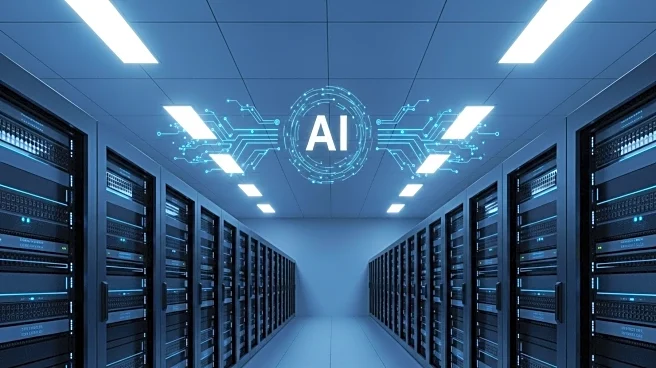What is the story about?
What's Happening?
The integration of AI into enterprise operations is transforming traditional network capacity planning. As AI systems become more autonomous and interact in complex ways, the predictable traffic patterns of the past are being replaced by dynamic, many-to-many exchanges. This shift is evident in environments such as office buildings and retail banks, where AI-powered video analytics and agents monitor security, customer flow, and IT health. These systems can trigger real-time responses to anomalies, leading to unpredictable spikes in network traffic. The traditional client-server model is being upended by agent-to-agent interactions, which require new approaches to network visibility, adaptability, and capacity planning.
Why It's Important?
The evolution of AI-driven networks has significant implications for enterprise infrastructure. Traditional methods of over-provisioning for peak traffic are becoming obsolete, as AI systems generate continuous and variable data flows. This requires networks to be more elastic and capable of dynamic resource allocation. The ability to adapt quickly to real-time demands is crucial for maintaining performance and resilience. Enterprises must invest in application-aware networking and end-to-end visibility to manage AI-driven traffic effectively. This transformation impacts how businesses plan for data sovereignty, privacy, and low-latency requirements, ultimately influencing operational efficiency and security.
What's Next?
Enterprises will need to innovate and develop new solutions to manage the challenges posed by AI-driven networks. This includes integrating security with identity to protect against risks unique to autonomous systems and prioritizing agent-to-agent flows. Networks must evolve to be intelligent and context-aware, capable of recognizing and securing AI-driven traffic in real time. As AI continues to advance, businesses will need to focus on designing networks that can adapt intelligently to changing traffic patterns, rather than simply scaling bandwidth. This shift will redefine how capacity planning is approached in the AI era.
Beyond the Headlines
The rise of AI-driven networks raises ethical and legal considerations, particularly regarding data privacy and security. As autonomous systems become more prevalent, organizations must address the potential for misuse of surveillance data and ensure compliance with regulations. The cultural shift towards AI integration also demands a reevaluation of workforce roles and skills, as employees adapt to working alongside intelligent systems. Long-term, this transformation could lead to new business models and opportunities, as enterprises leverage AI to enhance operational efficiency and innovation.
AI Generated Content
Do you find this article useful?













